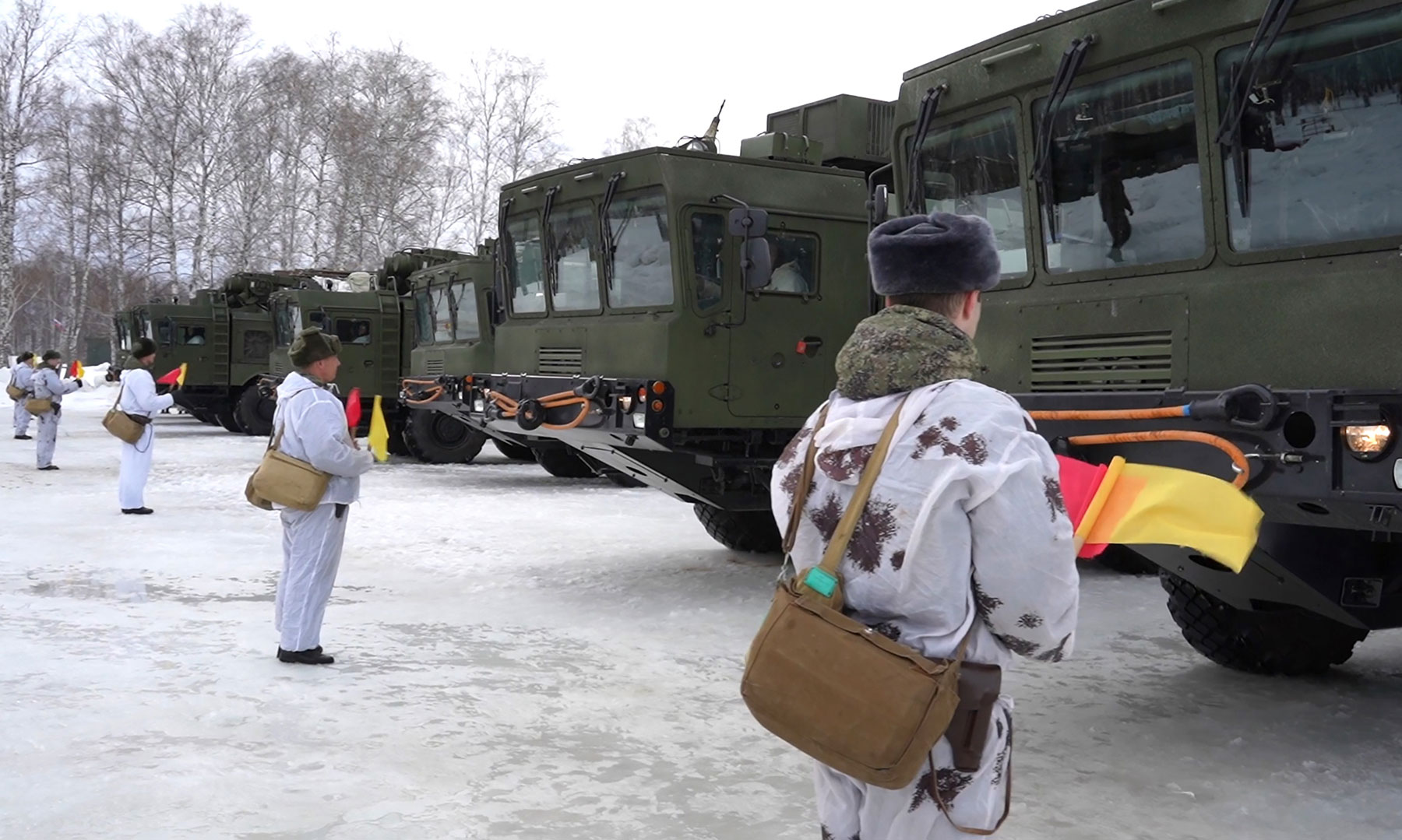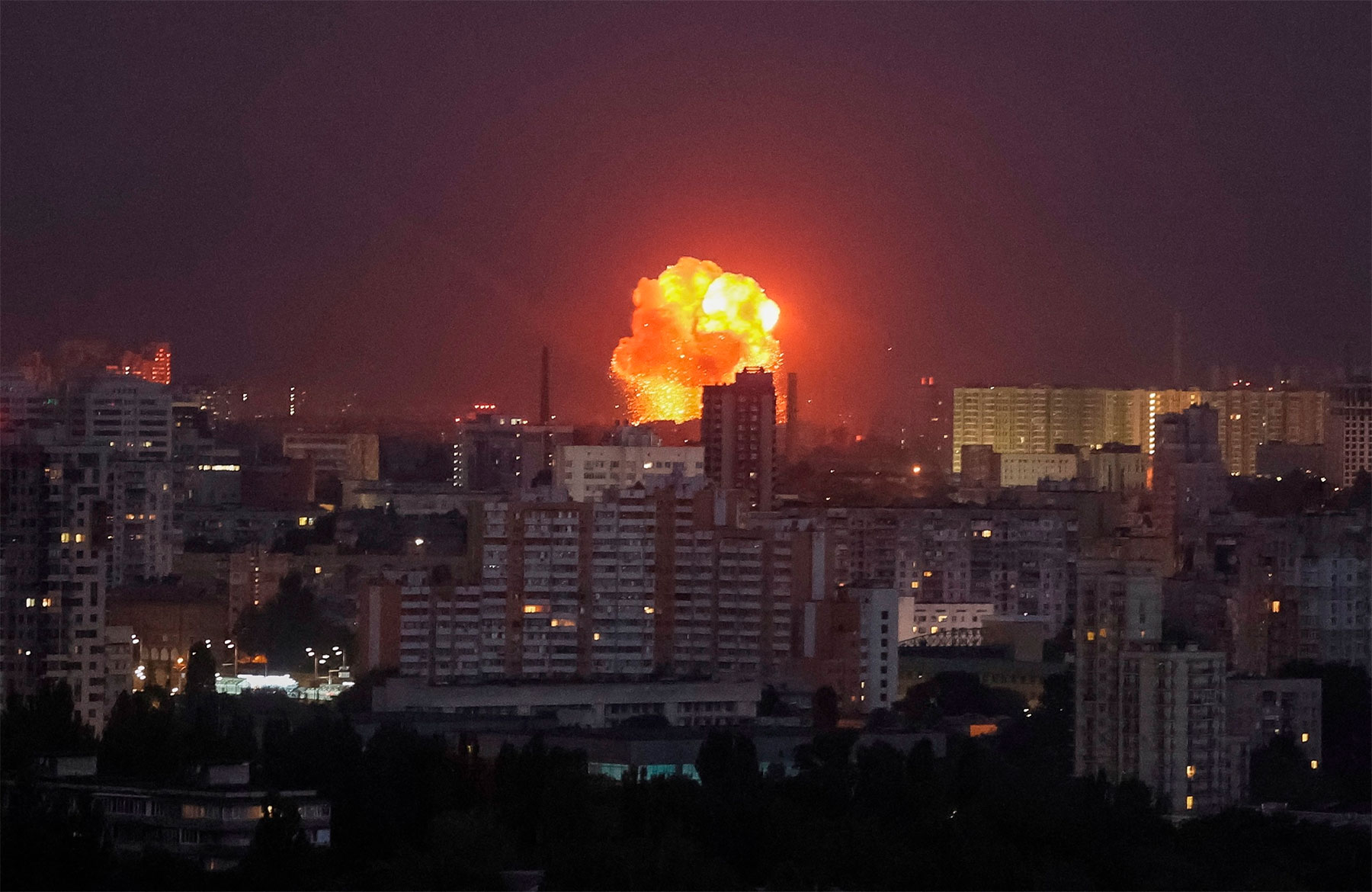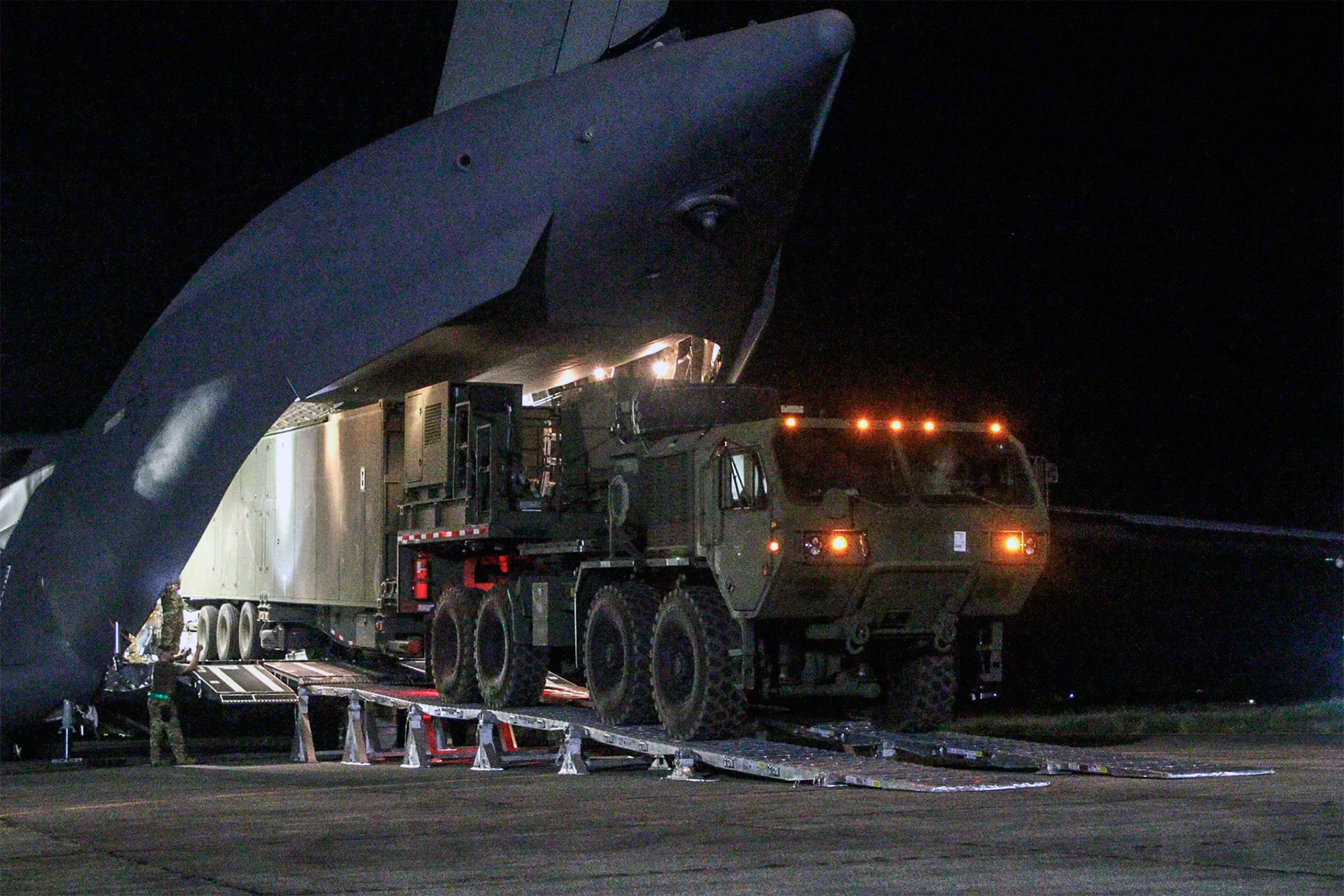In November 2024, Moscow took two important steps towards strengthening strategic deterrence. First, the updated Fundamentals of State Policy on Nuclear Deterrence have been approved and published. Secondly, a “combat test” of the latest Oreshnik missile system was carried out with a strike on the territory of Ukraine.
Russia has developed and tested an intermediate-range combat missile system capable of hitting targets within the European continent, both in non-nuclear and nuclear mode. The complex, apparently, has a hypersonic payload variant, so we are again ahead of the US: their “Dark Eagle” has yet to be successfully tested from a standard launcher. Of course, China and Iran have similar missiles, although without multiple warheads.
How can the adversary respond? In the context of the SMO, there are unlikely to be sharp steps, but we are reminded clearly of the threat of aggravating hostilities. Moreover, we have demonstrated the possibility of continuing escalation in the pre-nuclear phase, both within the existing theatre of operations and beyond. However, the nuclear threshold was also slightly lowered.
In a more global sense, the consequences are expected to be very serious, and both positive and negative scenarios are possible. The best outcome would be a substantive exchange of views with the US on the “Post-INF moratorium” and a parallel unilateral restraint from deploying intermediate-range missiles in Europe.
However, a further, ever-accelerating arms race—both offensive and defensive—is also possible. In Europe, for some time now, there have been talks about the need to develop their own long-range ground-launched missiles so as not to depend on the Americans in this matter. In France, talks are about the expediency of a new deployment of ground-launched ballistic missiles, albeit with ranges in the region of 1000 km. There is also talk of repurposing the US Aegis Ashore sites in Romania and Poland to counter the Russian missile arsenal. We can also expect the appearance of the US THAAD missile defense batteries in Europe, although the United States does not have enough of them for other theatres at this time.
Europe has approached the turn of the first quarter of the 21st century in the conditions of a high-intensity armed conflict and a new missile crisis. It is still difficult to predict whether we and our neighbors will get out of it without losses, but the only way to interrupt current trends can only be to address legitimate concerns in the field of military security. Otherwise, we will face years and years of an arms race and life on a powder keg, ready to explode at any moment without additional reasons.
In November 2024, Moscow took two important steps towards strengthening strategic deterrence. First, the updated Fundamentals of State Policy on Nuclear Deterrence have been approved and published. Secondly, a “combat test” of the latest Oreshnik missile system was carried out with a strike on the territory of Ukraine. The latter will be discussed in greater detail.
Background
It so happened: Russia was walking (and even pushed) to the Oreshnik launch for quite a long time. Without going too deep into history, there are two main factors worth focusing on.
In 2019, the Treaty on Intermediate-Range and Shorter-Range Missiles (INF Treaty) met its demise. After that, Russia unilaterally imposed a moratorium on the deployment of such systems. However, all this time, the United States has been actively developing, testing and even temporarily deploying missiles of this class, deliberately ignoring the Russian moratorium. Moscow reacted to this with restraint, which was perceived as weakness or evidence of technological backwardness. At the same time, Russia announced the development of a land-based version of the Kalibr cruise missile, as well as something called the ground-based medium-range hypersonic missile system. Based on the statements of the Commander-in-Chief of the Strategic Rocket Forces, General Karakaev, work on these systems (at least part of Oreshnik) was intensified last year, in the summer of 2023. Perhaps someday we will find out exactly what served as an additional incentive, but for now we will venture to assume the answer at face value: the catalyst was the Special Military Operation (SMO). As a result, today a whole line of relevant weapons is announced to be close to readiness.
It was the course of the SMO, or rather the specific actions of the members of the support group of Ukraine, that became the last straw that led to the combat launch of Oreshnik. Moscow has repeatedly—and at all levels—warned, if Kyiv is given permission to strike deep into the “old” territory of Russia with long-range Western-made missiles, this will lead to a sharp escalation in the conflict. Probably, due to the lack of clarity in explaining the specific consequences of past cases of ignoring such warnings—and sometimes even the Supreme Commander-in-Chief had to deal with this. Even in the Oreshnik case, explanations are given from the highest level—this time, the “collective West” decided to try to push the boundaries of what is acceptable. Domestic political considerations of the US also played a role: the desire to demonstrate commitment to support Ukraine and at the same time reduce the room for maneuver of the Donald Trump administration.
Organizational Issues
Before proceeding with the description of the technical characteristics of this weapon, it is necessary to pay attention to several organizational issues. We now know that Oreshnik is an intermediate-range missile: it can also have non-nuclear equipment, and it will be put into service with the Strategic Rocket Forces. But how exactly will the combat duty of the new system be organized? Apparently, it does not need “caravans” and infrastructure comparable to those needed for Yars and Topols. Rather, the Iskander-M and corresponding missile brigades of the ground forces can act as an analogue here. Another issue is related to the command-and-control system, including the delivery of launch orders and the introduction of flight tasks. Is the analogy with “large” missiles, with nuclear-armed ICBMs, appropriate here? Are other C3 “loops” used? How is (and if) constant interaction with intelligence agencies and reconnaissance troops carried out? Will the supply and maintenance of special warheads be more reminiscent of the practice of the Strategic Rockets Forces, or are analogies with non-strategic nuclear weapons possible?
After all, how will the preparation of operators be organized? Of course, now industry and design bureaus play a significant role, but in the future at least retraining courses will have to be opened, and rather the corresponding specialties at the Military Academy of the Strategic Rocket Forces. It is not yet clear where exactly the regiments with the new missile system will be included—in the new missile divisions or in the old ones? Where will Oreshniks be deployed—in Belarus, as Alexander Lukashenko suggests, beyond the Urals, in the Far East, in the new Leningrad Military District?
Technical Features
Now a few words about the “bolts and rivets.” Let us return to the official statements and publicly available video materials, from which we more or less reliably know the following:
- Oreshnik is equipped with a MIRV-type payload with hypersonic warheads, including non-nuclear variants.
- Probably, the warheads themselves can have cluster payloads.
Perhaps Oreshnik is equipped with gliding winged re-entry vehicles, but in fact, the warheads of MRBMs and ICBMs already approach the target at hypersonic speed. At the same time, “hypersonic weapons” are usually those that are capable of moving and maneuvering inside the atmosphere for a significant time at the appropriate speed.
The destructive power of the non-nuclear payload is not yet impressive in terms of the scale of devastation (of course, there is no talk of spraying Yuzhmash into atoms), but apparently, it makes it possible to deliver effective strikes on underground facilities—if, indeed, it was possible to achieve sufficient accuracy.
For the missile defense systems Oreshnik, of course, is a difficult target (perhaps the most difficult to date) due to its speed and the alleged terminal manoeuvrability of the warheads. However, with a successful combination of circumstances, anything can be intercepted, including this missile.
The “tree-ish” name of the product suggests a kinship with the Topol, and, possibly, the hypersonic “Anchar”, developed by the Moscow Institute of Thermal Technology. The “Light” ICBM “Rubezh”, the project paused at the end of the last decade, is often mentioned as one of the alleged ancestors of the Oreshnik system.
Oreshnik is most likely a solid-propellant rocket, which is generally the norm for this class of modern products. The fuel and the missile should probably be of a high level of technical perfection, although they might be inferior to future Western models due to limited access to the advanced element base.
The launcher is mobile, it can resemble the Pioner or, say, the late Soviet IRBMs—Skorost.
Prospects
Russia has developed and tested an intermediate-range combat missile system capable of hitting targets within the European continent, both in non-nuclear and nuclear mode. The complex, apparently, has a hypersonic payload variant, so we are again ahead of the US: their “Dark Eagle” has yet to be successfully tested from a standard launcher. Of course, China and Iran have similar missiles, although without multiple warheads.
How can the adversary respond? In the context of the SMO, there are unlikely to be sharp steps, but we are reminded clearly of the threat of aggravating hostilities. Moreover, we have demonstrated the possibility of continuing escalation in the pre-nuclear phase, both within the existing theatre of operations and beyond. However, the nuclear threshold was also slightly lowered.
In a more global sense, the consequences are expected to be very serious, and both positive and negative scenarios are possible. The best outcome would be a substantive exchange of views with the US on the “Post-INF moratorium” and a parallel unilateral restraint from deploying intermediate-range missiles in Europe.
However, a further, ever-accelerating arms race—both offensive and defensive—is also possible. In Europe, for some time now, there have been talks about the need to develop their own long-range ground-launched missiles so as not to depend on the Americans in this matter. In France, talks are about the expediency of a new deployment of ground-launched ballistic missiles, albeit with ranges in the region of 1000 km. There is also talk of repurposing the US Aegis Ashore sites in Romania and Poland to counter the Russian missile arsenal. We can also expect the appearance of the US THAAD missile defense batteries in Europe, although the United States does not have enough of them for other theatres at this time.
Instead of an Epilogue
Europe has approached the turn of the first quarter of the 21st century in the conditions of a high-intensity armed conflict and a new missile crisis. It is still difficult to predict whether we and our neighbors will get out of it without losses, but the only way to interrupt current trends can only be to address legitimate concerns in the field of military security. Otherwise, we will face years and years of an arms race and life on a powder keg, ready to explode at any moment without additional reasons.
First published in Russian in the Profile magazine.







